 È il mese di gennaio del 1970 e i volantini e ciclostilati del GUD, in cui appare il “topo maledetto”, poi circondato da altri personaggi (belle ragazze e squallidi barbuti falsi rivoluzionari), hanno subito un grande successo fra gli studenti. Negli anni successivi Marchal e alcuni dei suoi amici entrano in contatto con l'area giovanile del Msi che fa riferimento a Pino Rauti, in particolare con il dirigente giovanile Marco Tarchi. Dall'esperienza francese di Alternative e dall'entusiasmo di decine di giovani irrequieti e stufi del sonnolento ambiente missino, nel '74 prende il via l'esperimento de La voce della fogna, “giornale differente”, come recitava lo slogan sotto la testata. Un periodico satirico, irriverente, politicamente scorretto nei confronti dello stesso ambiente di provenienza, aperto alle novità non solo politiche, ma anche di costume.
È il mese di gennaio del 1970 e i volantini e ciclostilati del GUD, in cui appare il “topo maledetto”, poi circondato da altri personaggi (belle ragazze e squallidi barbuti falsi rivoluzionari), hanno subito un grande successo fra gli studenti. Negli anni successivi Marchal e alcuni dei suoi amici entrano in contatto con l'area giovanile del Msi che fa riferimento a Pino Rauti, in particolare con il dirigente giovanile Marco Tarchi. Dall'esperienza francese di Alternative e dall'entusiasmo di decine di giovani irrequieti e stufi del sonnolento ambiente missino, nel '74 prende il via l'esperimento de La voce della fogna, “giornale differente”, come recitava lo slogan sotto la testata. Un periodico satirico, irriverente, politicamente scorretto nei confronti dello stesso ambiente di provenienza, aperto alle novità non solo politiche, ma anche di costume.The Enigma of American Fascism in the 1930s
by Michael Kleen
Ex: http://www.alternativeright.com/
In the third decade of the Twentieth Century, as the Great Depression dragged on and the unemployment rate climbed above 20 percent, the United States faced a social and political crisis. Franklin Delano Roosevelt was swept to power in the election of 1932, forcing a political realignment that would put the Democratic Party in the majority for decades. In 1933, President Roosevelt proposed a “New Deal” that he claimed would cure the nation of its economic woes. His plan had many detractors, however, and at the fringes of mainstream politics, disaffected Americans increasingly looked elsewhere for inspiration.

Catholic priest and radio-personality Charles Coughlin’s Christian Front, the German American Bund, the Black Legion, and a variety of nationalist, anti-Semitic, and/or isolationist groups opposed to President Roosevelt, “Moneyed Interests,” and Marxism attracted over a million members and supporters during that decade. Collectively, these groups have long been considered to be a particularly American expression of the same type of fascism that swept Europe in the 1920s and 1930s. The application of the term “fascism” to such a wide variety of individuals and organizations has proved troublesome, however, and the historiography on the subject is conflicted. Did European-style fascism appeal to Americans? Could an “American fascism” have kept the United States out of World War 2?
In order to answer those questions, we must first determine what American fascism was and was not, and then we have to understand why these groups and individuals failed to form any kind of broad coalition against Roosevelt, the New Deal, or liberal democracy itself.
Depending on the historian, American fascism began either as a far-ranging, populist-inspired movement and later degenerated into a number of fringe groups and fanatics, or it began as an isolated phenomenon that lost credibility during the Second World War and simply disappeared. Its adherents either consisted of a wide spectrum of Americans, or of a few thousand recently naturalized immigrants and two or three intellectuals.
“In the United States there were all kinds of fascist or parafascist organizations,” Walter Laqueur asserted in Fascism: Past, Present, Future (1996), “but they never achieved a political breakthrough.”[i] A decade earlier, historian Peter H. Amann took an opposite track. “It seems clear that there were far fewer authentically fascist movements in Depression America than was thought at the time,” he argued.[ii] Conversely, Victor C. Ferkiss, writing in the 1950s, contended that American fascism “was a basically indigenous growth,” and that a broad fascist movement “arose logically from the Populist creed.”[iii]
According to Ferkiss, American fascism was defined as a movement that appealed to farmers and small merchants who felt “crushed between big business . . . and an industrial working class,” espoused nationalism in the form of isolationism, believed that authority came from popular will and not from “liberal democratic institutions” that had been corrupted by moneyed interests, and possessed “an interpretation of history in which the causal factor is the machinations of international financiers.”[iv] According to Peter Amann, all fascism (even the American type) was characterized by an opposition to Marxism and representative government, advocacy of a “revolutionary, authoritarian, nationalist state,” the presence of a charismatic leader and a militarized mass movement, and commonly (although not universally) racist and anti-Semitic views.[v]
These two divergent portrayals, one inclusive and one exclusive, mark the ends of the spectrum in regards to defining fascism in the United States during the 1930s. The former portrays fascism as a legitimate threat to the status quo, and the latter nearly calls its existence into question because so few groups actually fit this model.
American fascism’s cultural roots raise questions as well. Where did the members of these organizations come from? Did American culture encourage or condemn their growth? The data shows a complex picture. American fascism may have been encouraged by some aspects of American culture, but was vigorously condemned by others. The diversity of American interests made a unified fascism that posed a genuine threat to the social order nearly impossible. For instance, while the main constituency of Father Charles Coughlin’s movement was Irish Catholic,[vi] and the members of the German-American Bund mostly recent immigrants,[vii] the Black Legion of the Midwest was fiercely nativist and only accepted Protestants into its ranks.[viii]
What was it about American history and culture doomed openly fascist or fascoid movements? All historians, in their answers, point to our differing conceptions of individual liberty, suspicion of authority, and the commitment to republican government. “No country with a deeply rooted liberal or democratic tradition went fascist,” Peter Amann argued.[ix] For American intellectuals, Victor Ferkiss wrote, “fascism was by definition un-American.”[x] Even the openly racialist and white supremacist South overwhelmingly rejected any comparison to Nazi Germany, and denied it’s Ku Klux Klan had anything to do with fascism.[xi] It seemed that even while incorporating fascist elements, very few Americans openly advocated fascism according to the European model.
Victor C. Ferkiss was far more liberal in his assessment of American fascism than later historians. In his essays “Ezra Pound and American Fascism” (1955) and “Populist Influences on American Fascism” (1957), he attempted to link American fascist groups of the 1930s to the Populist movement of the 1890s, and he broadened the definition of fascism to include prominent aspects of Populism in the United States.
Ezra Pound, American expatriate, poet, and supporter of Benito Mussolini, was the lynchpin of Ferkiss’ argument for an inclusive definition of American fascism. Pound’s ideas, in the widest sense, mirrored those of others in the United States who were known as fascists by their detractors. Ferkiss justified his application of the term by arguing that those individuals and groups “espouse sets of beliefs which have more in common with one another and with European fascism than they do with any other broad area of political thought.”[xii] He listed Huey Long, Gerald L. K. Smith, Father Charles E. Coughlin, and Lawrence Dennis as among those individuals, regardless of how few commonalities their ideas they may have actually shared with European fascist thought.
With this list in hand, Ferkiss held Populism directly responsible for these individual’s fascist tendencies. “American fascism had its roots in American populism,” he declared. “These populist beliefs and attitudes form the core of Pound’s philosophy, just as they provide the basis of American fascism generally.”[xiii] His definition of American fascism followed from that broad interpretation of the commonalities of American fascist thought, even though he acknowledged some fundamental differences. Ezra Pound’s “main divergence from [Lawrence] Dennis is the emphasis which, along with Father Coughlin and Huey Long, he places on the role of finance capitalism as a direct cause of war,” he explained. “For Pound, democracy is a sham.”[xiv]
Ferkiss argued that American fascists viewed the American Revolution as a revolt against the international banking system of England, and that “Mussolini’s objectives are those of Thomas Jefferson,” in his effort to free his country from the power of banks and usury.[xv] That focus on the fascist powers of Europe as defenders of money reform lent to their American supporter’s isolationism, but Ferkiss failed to take into account that approval or agreement does not directly translate into political imitation.
As for the constituency of American fascism, Ferkis argued that “the America First Committee provided the culture in which the seeds of American fascism were to grow.” The AFC was predominantly made up of Midwesterners and a few prominent businessmen, but also had chapters in large Eastern and Western cities. While the AFC was not overtly fascist, “a considerable portion of its chapters were dominated by fascists or their friends,” Ferkiss explained.[xvi] Ezra Pound was also a Midwesterner, having been born in Idaho. He later took a teaching job in Indiana, but he was let go for being “too European” and “unconventional.”[xvii] He emigrated to Europe shortly thereafter.

Written at the same time as Victor Ferkiss’ essays, Joachim Remak’s article “'Friends of the New Germany': The Bund and German-American Relations” (1957) chronicled the nearly universal American reaction against one of the few American fascist groups to consciously model itself after and receive direct inspiration from a European fascist regime: the German-American Bund. Even though the German government forbid its citizens from becoming members of the Bund, and requested that the Bund cease using National Socialist emblems in 1938, most Americans still believed the organization was a foreign entity. “The Americans on its rolls were all of them recent immigrants” from Nazi Germany, Remak explained. “German-Americans had no use for the Bund… the president of the highly conservative Steuben Society called on the [German] embassy to say that his group felt compelled to issue a public repudiation of the Bund.”[xviii]
Remak argued that the German-American Bund, rather than appealing to some broad pro-fascist sympathy in the United States, only harmed relations with National Socialist Germany by demonstrating to Americans the nature of European fascism. “Naziism, with its brutality and its suppression of basic liberties and decencies, could hold no greater appeal for the German-Americans than for the rest of the nation,” he argued.[xix] The rejection of an explicitly fascist organization by those Americans who Victor Ferkiss believed made up the core of ‘American fascism’ is instructive.
Along the same lines, Leland V. Bell, in his book, In Hitler's Shadow: the Anatomy of American Nazism (1973), argued that the real supporters of fascism in the United States were few and far between. In the 1930s, the Nazi party’s pleas for money from American contributors like Henry Ford and the Ku Klux Klan fell on deaf ears. Teutonia, one of the first pro-Nazi groups in the United States, numbered less than one hundred members in 1932, and the typical members of those groups were “young, rootless German immigrants,” and “arrogant, resolute, fanatics.”[xx] When Heinz Spanknoebel formed the Friends of the New Germany in July 1933, “a storm of public protest” greeted them. Four months later, Spanknoebel, like Ezra Pound had earlier, fled the United States.[xxi] The Friends of the New Germany failed to attract significant support from German Americans, who by that time “were accepted, respected citizens and easily assimilated into American life,” Bell explained.[xxii]
In 1936, Fritz Kuhn, a naturalized American citizen who had served in the German army during the First World War, became head of the organization. He renamed it the German-American Bund to attract more American nationals. Most of the constituency of the Bund was made up of recent German immigrants, however, despite Adolf Hitler having banned German citizens from becoming members of the organization. In contrast to Victor Ferkiss’ claim that supporters of American fascism were predominantly rural, the Bund was an urban lower-middle-class movement.[xxiii]
It is clear from Joachim Remak and Leland Bell’s analysis of the German-American Bund that Americans were generally suspicious of overtly fascist groups along the European model. Even the ethnic Germans who had established themselves in the Midwest as farmers and craftsmen, who generally supported isolationism before both World Wars, were not sympathetic to the anti-Democratic, outspokenly pro-Hitler Bundists.
One of the intellectual proponents of American fascism mentioned by Victor Ferkiss was Seward Collins, editor and publisher of the journal American Review. In his article “Seward Collins and the American Review: Experiment in Pro-Fascism, 1933-37” (1960), historian Albert E. Stone argued that Collins’ attempts to “define fascism and apply it to American life” not only produced nothing but controversy, but also undermined his project by alienating his supporters.
Seward Collins’ definition of fascism was unique compared to those covered thus far. According to Stone, Collins amalgamated four schools of thought—two English and two American—which he trumpeted in the American Review: Distributism, Neo-Scholasticism, Humanism, and Southern Agrarianism. Stone explained, “Where these four bodies of thought converged, Collins believed, could be found a definition of fascism which should be offered to thoughtful Americans.”[xxiv] For Seward Collins, fascism meant an end to parliamentary government, but not necessarily an end to democracy. Instead of a president, the head of state would be a monarch― “A strong man at the head of government,”[xxv] which would be coupled by nationalism undivided by rival oppositions.
Collins asserted that the essence of fascism was “the revival of monarchy, property, the guilds, the security of the family and the peasantry, and the ancient ways of European life.”[xxvi] However, that conception of fascism seemed to be a Collins’ own invention and was certainly far afield from the views of Ezra Pound or the German-American Bund. Also, Collins’ espoused anti-Semitism “bore virtually no trace of racial superiority.” He wished to exclude Jews from his fascist state only because they represented social and political rivals, as well as potential dissenters. There was no place in his mind for ideas of Nordic racial superiority, which he called “nonsense.”[xxvii] That would also distinguish him from organizations like the Black Legion and the German-American Bund.
According to Albert Stone, Collins’ views on monarchy and nationalism ultimately alienated one of his important constituencies in the United States, Southern Agrarians. “Southern Agrarians opposed in theory a strong central government,” Stone explained. They were also suspicious of nationalism, deeply isolationist, and “welcomed regional, social and racial differences as healthy manifestations of time, place and tradition.”[xxviii] During a January 1936 interview with the pro-communist magazine FIGHT, Seward Collins colorfully explicated his desire for a monarchy and a return to a medieval society, disparaged liberal education, and voiced admiration for Hitler and Mussolini.
Almost immediately after the interview was published, the American Review’s Southern Agrarian writers left in protest. The Distributists also distanced themselves. Herbert Agar, a prominent member of that bloc, stated, “I would die in order to diminish the chances of fascism in America.”[xxix] The American Review ceased publication in 1937. In the end, it seemed that the majority of Seward Collins’ contributors wanted nothing to do with his views.
In “Vigilante Fascism: The Black Legion as an American Hybrid” (1983) and “A 'Dog in the Nighttime' Problem: American Fascism in the 1930s” (1986), Peter H. Amann argued for a narrow definition of fascism that held closely to the European model and therefore excluded most American groups. Instead, he employed the terms “protofascist” or “fascoid” to describe American organizations that embraced certain aspects or appearances of fascism, but failed to develop into mature fascist political movements.
One such group was the Black Legion, a secret offshoot of the Midwestern Ku Klux Klan. An Ohioan named Dr. William Jacob Shepard formed the Legion during the late 1920s, but never intended the group to take on a life of its own. He was a Northerner who idolized the old South, and he “spouted, and apparently believed, the most rotund platitudes about southern chivalry.”[xxx] He was also a baptized Catholic who hated Catholics, and a doctor who did not shy away from violence.
His Black Legion donned black robes instead of white and held secret initiation rituals. “They were asked to endorse the standard nativist anti-immigrant, anti-Negro, and anti-Catholic positions,” Amann explained, and “pledge support to lynch law.”[xxxi] Initiates were often coaxed or deceived into coming to meetings, and then threatened with death if they did not join.[xxxii] The membership of the Legion was spread across Ohio, Indiana, Michigan, and parts of Illinois, and the majority of members were urban and working class.[xxxiii]
The Black Legion became more violent and more revolutionary as time went on, bringing them closer to the European fascist model. Bert Effinger, their defacto leader during the 1930s, even planned “to kill one million Jews by planting in every American synagogue during Yon Kippur time-clock devices that would simultaneously release mustard gas.”[xxxiv]
Amann argued that the secretive nature of the group prevented them from becoming an effective organization. They were powerful in some ways, but their secrecy made it impossible for them to appeal to a mass audience. No one outside of their organization knew they existed—not even their enemies—so fear and intimidation became a useless tactic. They attempted to create front organizations to infiltrate established political parties but, ultimately, “by pretending to be mere Republicans, Legionnaires ended up acting as mere Republicans.”[xxxv]
Despite their failure, the Black Legion did share many characteristics with European fascist groups. According to Amann, they shared many of the same hatreds, revolutionary goals, and dictatorial tendencies. However, their initiation ceremonies, because of their ultra secrecy, never held the same weight as the mass rallies and rituals of European fascists. Also, the Legion’s nativism was patriotic in a crucial way: the American system may have been corrupt, but there was no alternative to the Constitution or the Republic. Their goal was only to purify the current system, not overthrow it. The history of the Black Legion ultimately shows, Amann argued, that “vigilante nativism and revolutionary-fascism were fundamentally incompatible.”[xxxvi] Additionally, he concluded, “by no stretch of anyone’s imagination can the Black Legion under Dr. Shepard be described as fascist. His Night Riders were to fascism what the Shriners are to Islam.”[xxxvii]
Similarly, the ultra-patriotic societies of the 1930s that evolved into the America First Committee, which Victor Ferkiss believed provided the cultural basis for American fascism, lacked the same crucial ingredients as their alleged European counterparts. “Whatever emphasis prevailed,” Amann explained, “there was never any thought of attacking the American constitutional system, the incumbent politicians, or the two major parties. Nor was there any attempt at mass mobilization.” The Ku Klux Klan, for example, never formed a political party or sought to change the political or economic system of the United States. Therefore, Amann concluded, “the overlap between American nativism and the European type of fascism is… more apparent than real.”[xxxviii]
The nature of these diverse groups also prevented them from working together to present a united front. “The nativist inheritance included… a divisive traditional anti-Catholicism that led the Black Legion to plant explosives in Father Charles Coughlin’s shrine rather than to seek him out as a potential ally,” Peter Amann pointed out.[xxxix] Additionally, genuinely fascist groups like the German-American Bund, with their “aping” of European fascist models, had their patriotic credentials routinely called into question. “It became obvious that in the United States such a nationalism could not be imported from abroad without looking both foolish and unpatriotic,” Amann argued.[xl] A genuine American fascism appealed to very few Americans in the 1930s, and every protofascist organization fell apart the more violent and overtly fascist in appearance and action it became.
In his book Hoods and Shirts: the Extreme Right in Pennsylvania (1997), Philip Jenkins tackled the problem of American fascism from a different angle. He argued that fascism was “polychromatic rather than monotone,” and embraced a spectrum of beliefs across Europe that was also reflected in the United States.[xli] If historians were not hesitant to label such diverse groups as Na Léinte Gorma in Ireland and the Croatian Ustashi (who were lead by church figures and clergymen) as fascist, he reasoned, then they should not be hesitant to label an organization like Father Coughlin’s Christian Front in the same manner.
However, the issue is complicated by the fact that fascist groups in the United States hesitated to call themselves as such. “The organizations most enthusiastic about European Nazism or fascism rarely included these provocative terms in their titles,” he explained. Most often, “Christian” and “Nationalist” were substituted instead because their appeal to American patriotism precluded foreign ideologies. In his own words, “a denial of fascism was phrased as part of a general rejection of any foreign theories.”[xlii]
Father Coughlin’s Christian Front was one of the primary organizations profiled in Hoods and Shirts. According to Jenkins, the Christian Front was founded on “traditions of Irish nationalism” and “anti-British feeling.”[xliii] Although Coughlin himself broadcast his radio messages from Michigan, the Front’s membership was heavily Irish and centered in large cities such as New York, Chicago, Baltimore, Cleveland, Boston and Philadelphia. Jenkins described Father Coughlin as akin to Spanish Nationalist leader Francisco Franco, to whom Coughlin had given moral support during the Spanish Civil War.
Coughlin’s movement linked Jews with communism and saw the Spanish Civil War as a war between good and evil. “Sympathy for Jews was indistinguishable from providing aid and comfort for Communist subversion,” Jenkins explained. The Christian Front allied itself with an assortment of groups, including the German-American Bund, in support of attacks on Jewish synagogues and businesses.[xliv] These activities, along with some outspoken statements in favor of Adolf Hitler, led to the arrest of dozens of movement members. Not all Irish Catholics supported those activities. After one particularly violent incident, an Irish Catholic magistrate “accused the Coughlinites of attempting to spread ‘European’ conditions in Philadelphia.”[xlv] Other Catholics regularly denounced Coughlin in newspapers and journals.[xlvi]
The Christian Front did welcome members from other backgrounds, as evidenced by its willingness to work together with Bund members as well as Italian-Americans. “In New York City over half of all Catholic clergy serving predominantly Italian parishes demonstrated sympathy for the Fascist cause and thus cooperated with the emerging Front,” Jenkins explained.[xlvii] African-American anti-Semites, especially those involved with Black Muslim sects, also attended gatherings and supported Front anti-Jewish activities. Some African Americans in large cities saw Jews as “exploitative landlords and grasping merchants,”[xlviii] which echoed the crusade against “moneyed interests” that was so central to Victor Ferkiss’ definition of American fascism.
As the Second World War broke out in Europe, the Christian Front faced increasing public opposition, as well as persecution by the FBI. Jenkins concluded that both its supporters and its enemies exaggerated the impact of the movement, but it represented one of the only fascoid groups in the United States during the 1930s to have been genuinely domestic in origin. “Of all the activist groups,” he argued, “this had perhaps the greatest potential to become a genuine mass movement around which others could coalesce.”[xlix] Even still, like every other American group on the far right, the political movement it sought to inspire fizzled out when the United States entered the war.
The historical record is very clear. The range of individuals and organizations surveyed by Victor Ferkiss, Peter Amann, and Philip Jenkins all show a similar arch: a steady rise in popularity followed by radicalization, which then ran up against resistance when the group’s activities were exposed. The end result was the rapid dissolution of the organization or the exile of the individual. By 1941, no one who openly came out as being supportive of fascism survived very long in the public eye.
Although a certain cultural undercurrent was needed in order to support the existence of these groups, that cultural undercurrent was undermined by the American democratic tradition they sought to oppose. It seems that, at least in the atmosphere of 1930s America, one could not be both a fascist in any meaningful sense of the word and also be supported by the majority of Americans who saw fascism as a threat to their liberal democratic institutions. The experiences of groups such as the German-American Bund, the Black Legion, Father Coughlin’s Christian Front, and individuals like Seward Collins and Ezra Pound seem to confirm that fascism was by definition a fundamentally “European” phenomenon.
[i] Walter Laqueur, Fascism: Past, Present, Future (New York: Oxford University Press, 1996), 17.
[ii] Peter H. Amann, “A 'Dog in the Nighttime' Problem: American Fascism in the 1930s,” The History Teacher 19 (August 1986): 574.
[iii] Victor C. Ferkiss, “Populist Influences on American Fascism,” The Western Political Quarterly 10 (June 1957): 350, 352.
[iv] Ibid., 350-351.
[v] Amann, 560.
[vi] Ibid., 574.
[vii] Leland V. Bell, In Hitler's Shadow: the Anatomy of American Nazism (Port Washington, NY: Kennikat Press, 1973), 21.
[viii] Peter H. Amann, “Vigilante Fascism: The Black Legion as an American Hybrid,” Comparative Studies in Society and History 25 (July 1983): 496.
[ix] Amann, “A ‘Dog in the Nighttime Problem”: 559.
[x] Ferkiss, “Populist Influences on American Fascism”: 350.
[xi] Johnpeter Horst Grill and Robert L. Jenkins, “The Nazis and the American South in the 1930s: A Mirror Image?,” The Journal of Southern History 58 (November 1992): 688.
[xii] Ferkiss, “Ezra Pound and American Fascism”: 173-4.
[xiii] Ibid., 174.
[xiv] Ibid., 186.
[xv] Ibid., 190.
[xvi] Ferkiss, “Populist Influences on American Fascism”: 367-8.
[xvii] Ferkiss, “Ezra Pound and American Fascism”: 175.
[xviii] Joachim Remak, “'Friends of the New Germany': The Bund and German-American Relations,” The Journal of Modern History 29 (March 1957): 40.
[xix] Ibid., 41.
[xx] Leland V. Bell, In Hitler's Shadow: the Anatomy of American Nazism (Port Washington, NY: Kennikat Press, 1973), 7.
[xxi] Ibid., 13.
[xxii] Ibid., 15-16.
[xxiii] Ibid., 21.
[xxiv] Albert E. Stone, Jr., “Seward Collins and the American Review: Experiment in Pro-Fascism, 1933-37,” American Quarterly 12 (Spring 1960): 6.
[xxv] Ibid., 7.
[xxvi] Ibid., 9.
[xxvii] Ibid., 12.
[xxviii] Ibid., 13.
[xxix] Ibid., 17.
[xxx] Peter H. Amann, “Vigilante Fascism”: 494.
[xxxi] Ibid., 496.
[xxxii] Ibid., 498.
[xxxiii] Ibid., 509.
[xxxiv] Ibid., 512.
[xxxv] Ibid., 515.
[xxxvi] Ibid., 524.
[xxxvii] Ibid., 501.
[xxxviii] Peter H. Amann, “A 'Dog in the Nighttime' Problem”: 562.
[xxxix] Ibid., 567.
[xl] Ibid., 569.
[xli] Philip Jenkins, Hoods and Shirts: the Extreme Right in Pennsylvania, 1925-1950 (Chapel Hill: The University of North Carolina Press, 1997), 27.
[xlii] Ibid., 25-26.
[xliii] Ibid., 166.
[xliv] Ibid., 173.
[xlv] Ibid., 174.
[xlvi] Ibid., 187-8.
[xlvii] Ibid., 183.
[xlviii] Ibid., 185.
[xlix] Ibid., 191.

Michael Kleen
Michael Kleen is the Editor-in-Chief of Untimely Meditations, publisher of Black Oak Presents, and proprietor of Black Oak Media. He holds a master’s degree in American history and is the author of The Britney Spears Culture, a collection of columns regarding issues in contemporary American politics and culture. His columns have appeared in various publications and websites, including the Rock River Times, Daily Eastern News, World Net Daily, and Strike-the-Root.





 del.icio.us
del.icio.us
 Digg
Digg
 Die Ereignisse in Nordafrika überschlagen sich, der Überblick droht für den Westeuropäer immer mehr verloren zu gehen. Die Volksaufstände, die ihren Ausgang in Tunesien fanden, haben sich nach der erfolgreichen ägyptischen Revolution nun auch auf dutzende andere arabische Staaten ausgebreitet. Selbst ölreiche Staaten wie Saudi-Arabien, die ihre Bevölkerung seit Jahrzehnten mit „Brot und Spiele“ bei Laune halten, haben bereits prophylaktische Demonstrationsverbote und ähnliche repressive Anordnungen erlassen. Am stärksten wütet der Volkszorn der arabischen Welt momentan jedoch in Libyen, dem seit Jahrzehnten vom Gaddafi-Clan in diktatorischer Art und Weise geknechteten nordafrikanischen Nachbar von Tunesien und Ägypten.
Die Ereignisse in Nordafrika überschlagen sich, der Überblick droht für den Westeuropäer immer mehr verloren zu gehen. Die Volksaufstände, die ihren Ausgang in Tunesien fanden, haben sich nach der erfolgreichen ägyptischen Revolution nun auch auf dutzende andere arabische Staaten ausgebreitet. Selbst ölreiche Staaten wie Saudi-Arabien, die ihre Bevölkerung seit Jahrzehnten mit „Brot und Spiele“ bei Laune halten, haben bereits prophylaktische Demonstrationsverbote und ähnliche repressive Anordnungen erlassen. Am stärksten wütet der Volkszorn der arabischen Welt momentan jedoch in Libyen, dem seit Jahrzehnten vom Gaddafi-Clan in diktatorischer Art und Weise geknechteten nordafrikanischen Nachbar von Tunesien und Ägypten. L’actualité récente de la Côte d’Ivoire illustre parfaitement la résistance de l’Humanité diverse contre le mondialisme uniformisateur. Selon Bernard Lugan (photo), « les Africains sont des gens enracinés. Ils comparent Alassane Ouattara, vainqueur de l’élection présidentielle, à un Dominique Strauss-Kahn noir », les deux hommes étant professionnellement liés au FMI, le Fonds monétaire international.
L’actualité récente de la Côte d’Ivoire illustre parfaitement la résistance de l’Humanité diverse contre le mondialisme uniformisateur. Selon Bernard Lugan (photo), « les Africains sont des gens enracinés. Ils comparent Alassane Ouattara, vainqueur de l’élection présidentielle, à un Dominique Strauss-Kahn noir », les deux hommes étant professionnellement liés au FMI, le Fonds monétaire international.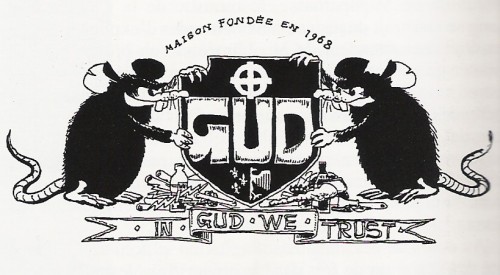

.jpg)
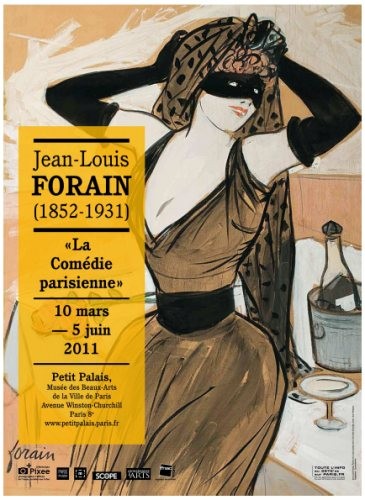 Au Petit-Palais est organisée, jusqu’au 5 juin, une exposition consacrée à Jean-Louis Forain. Cet artiste, qui vécut de 1852 à 1931, est connu des amateurs pour ses dessins parus dans Le Figaro, Le Courrier français, L’Echo de Paris, Le Gaulois mais aussi le New York Herald. Mais il a fait plus et mieux. Forain a en effet été au cœur de l’impressionnisme : à partir de 1879 il est invité par Degas à participer aux expositions du groupe impressionniste. Ami, aussi, de Manet, de Toulouse-Lautrec, de Picasso, il a partagé, jeune homme désargenté, une misérable chambre de bonne avec un certain Arthur Rimbaud. Fondamentalement hostile au monde bourgeois, Forain, ami de Verlaine, dessine et met en couleurs, à la gouache et à l’aquarelle, des scènes de la vie parisienne qui illustrent les turpitudes de vieux messieurs bien comme il faut achetant les charmes de malheureuses gamines condamnées au trottoir ou au bordel. Forain tape fort et juste, avec un don d’observation qui frappe l’œil du spectateur le moins averti.
Au Petit-Palais est organisée, jusqu’au 5 juin, une exposition consacrée à Jean-Louis Forain. Cet artiste, qui vécut de 1852 à 1931, est connu des amateurs pour ses dessins parus dans Le Figaro, Le Courrier français, L’Echo de Paris, Le Gaulois mais aussi le New York Herald. Mais il a fait plus et mieux. Forain a en effet été au cœur de l’impressionnisme : à partir de 1879 il est invité par Degas à participer aux expositions du groupe impressionniste. Ami, aussi, de Manet, de Toulouse-Lautrec, de Picasso, il a partagé, jeune homme désargenté, une misérable chambre de bonne avec un certain Arthur Rimbaud. Fondamentalement hostile au monde bourgeois, Forain, ami de Verlaine, dessine et met en couleurs, à la gouache et à l’aquarelle, des scènes de la vie parisienne qui illustrent les turpitudes de vieux messieurs bien comme il faut achetant les charmes de malheureuses gamines condamnées au trottoir ou au bordel. Forain tape fort et juste, avec un don d’observation qui frappe l’œil du spectateur le moins averti.
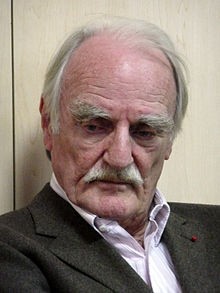 An Jean Raspails berühmt-berüchtigten Roman
An Jean Raspails berühmt-berüchtigten Roman 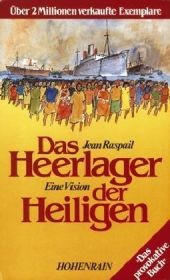 Dabei gilt es auch, den gigantischen Verrat zu sehen, der zur Zeit von den Eliten der westlichen Welt an ihren Völkern begangen wird. Raspails sardonische Karikatur der landauf landab herrschenden linksliberalen Psychose, die tagtäglich neue
Dabei gilt es auch, den gigantischen Verrat zu sehen, der zur Zeit von den Eliten der westlichen Welt an ihren Völkern begangen wird. Raspails sardonische Karikatur der landauf landab herrschenden linksliberalen Psychose, die tagtäglich neue 
.jpg)


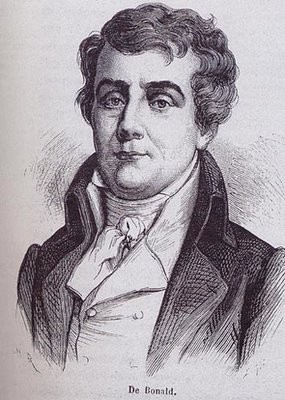 Unlike Edmund Burke and Joseph de Maistre, Louis de Bonald devoted little space to analyzing the French Revolution itself. His focus instead was on understanding the traditional society which had been swept away. His review of Mme. de Staël’s
Unlike Edmund Burke and Joseph de Maistre, Louis de Bonald devoted little space to analyzing the French Revolution itself. His focus instead was on understanding the traditional society which had been swept away. His review of Mme. de Staël’s .jpg)

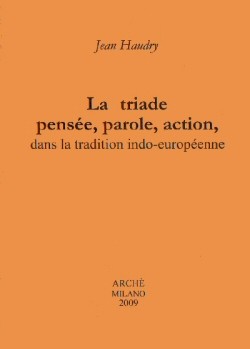
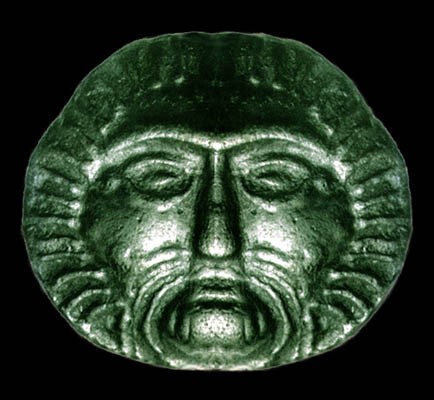


Brett and Kate McKay
The Art of Manliness: Classic Skills and Manners for the Modern Man
Cincinnati: How Books, 2009
It’s hard not to like this book. However, it’s really the idea of the book that I like, rather than the book itself. In fact, I almost hesitate to write this review (which will not be wholly positive) because I think the authors have their hearts in the right place, and because I like their website http://artofmanliness.com/
When I showed this book to a young friend of mine he was incredulous: “Do we really need a manual on being a man?” he asked. Well, yes it appears we do. As the authors say in their introduction “something happened in the last fifty years to cause . . . positive manly virtues and skills to disappear from the current generations of men.” They don’t really tell us what they think that something is, but two paragraphs later they remark: “Many people have argued that we need to reinvent what manliness means in the twenty-first century. Usually this means stripping manliness of its masculinity and replacing it with more sensitive feminine qualities. We argue that masculinity doesn’t need to be reinvented.”
I wanted to let out a cheer at this point, but I was sitting in the American Film Academy Café in Greenwich Village, surrounded by young white male geldings and their Asian girlfriends. So I kept my mouth shut and noted to myself that the McKays are clearly not PC, though there are minor nods to political correctness here are there. One gets the feeling that they know more than they are letting on in this book. And one gets the feeling they are employing a simple and sound strategy: to seduce male readers with the natural appeal of traditional manliness – while revealing just-so-much of their political incorrectness so as not to completely alienate their over-socialized readers.
Still, the McKays are pretty socialized themselves, and one sees this immediately on opening the book and finding that it is dedicated to two members of “the greatest generation.” Ugh. Yes, I do think there’s much to admire about my grandfather’s generation, but I long ago came to detest the conventional-minded romanticism about America’s great crusade in WWII. And the very use of the phrase “greatest generation” has become a cliché.
However, the real trouble begins after the introduction, when one finds that the first section of the book is devoted to how to get fitted for a suit. Then we are instructed in how to tie a tie. For some unaccountable reason the tying of the Windsor knot is included here. (Like Ian Fleming, I have always regarded the Windsor knot as a mark of a vain and unserious man.) This is followed by sections on how to select a hat, how to iron a shirt, how to shave, and how not to be a slob at the dinner table. So far so good: I know all this stuff, so I guess I’m pretty manly. Of course, the problem here is that this is all in the realm of appearance. To be fair, the McKays do go on to include much in their book about character, but one must wade through a lot of inessential stuff to get there.
At one point we are instructed in how to deliver a baby. The McKays’ core piece of advice here is “get professional help!” Curiously, this is also the central tenet of their brief lectures on dealing with a snakebite and landing a plane. The baby having been delivered, the reader will find further instructions on how to change a diaper and how to braid your daughter’s hair. (This is what happens when you co-author a book with your wife.) The McKays’ advice on raising children is sound. They advise us not to try and be our child’s best friend.
Once you have tended to your daughter’s snakebite and braided her hair (in that order, please), you can turn to manlier things like how to win a fight, how to break down a door, how to change a flat tire, how to jump start a car, how to go camping, how to navigate by the stars, and how to tie knots. Then it will be Miller time, and you will want some manly friends to hang out with.
The section on male friendship, in fact, is one of the best parts of the book. The McKays remind us that in ancient times “men viewed male friendship as the most fulfilling relationship a person [i.e., a man] could have.” They attribute this, however, to the fact that men saw women as inferior. This is at best a half-truth. The real reason men saw male friendship as more fulfilling than relations with women is because it is. There are vast differences between men and women, and while they may be able to have close, loving relationships they never really understand each other, and their values clash.
Women are primarily concerned with the perpetuation of the species. They are the peacemakers, who just want us all to get along, because their main concern is what Bill Clinton called “the children.” By contrast, men find their greatest fulfillment in achieving something outside the home: they are only fully alive when they are fighting for some kind of value. A man can only be truly understood by another man.
Thus was born what the McKays refer to as “the heroic friendship”: “The heroic friendship was a friendship between two men that was intense on an emotional and intellectual level. Heroic friends felt bound to protect one another from danger.” The McKays devote some discussion to the decline of close male friendships, and they have a lot to say about the disappearance of affection among male friends.
A while back I found myself in a bookstore flipping through a book of photographs from WWII. Many of them depicted soldiers, sailors, and marines relaxing or goofing around. What was remarkable about many of these pictures was the affection the men displayed for one another. There was one photo, for example, of a sailor asleep with his head in another sailor’s lap. This is the sort of thing that would be impossible today, because of fear of being thought “gay.” The McKays mention this problem. As George Will once said, the love that dare not speak its name just can’t seem to shut up lately. And it has ruined male bonding. Thus was born the “man hug” with the three slaps on the back that say I’M (THUMP) NOT (THUMP) GAY (THUMP). (Yes, the McKays instruct us on how to perform the man hug in both its American and international versions.)
Another thing that has ruined male friendships is women, but in a number of different ways. First of all, as every man knows, women have now invaded countless previously all-male areas in life. This usually results in ruining them for men. Second, many women resent it when their husbands or partners want to spend time with their male friends. In earlier times, men would spend a significant amount of time away from their wives working or playing with male peers. But no longer. Now women expect to be their husband’s “best friend,” and men today passively go along with this. The result is that they often become completely isolated from their male friends. It is quite common today, in fact, for men to expect that marriage means the end of their friendship with another man. Please note that all of the above problems have only been made possible by the cooperation of men – by their not being manly enough to say “no” to women.
Eventually, one finds the McKays dealing with matters having to do with manly character, such as their discussion of the characteristics of good leadership. A lot of what they have to say is sound advice, but it is not without its problems. At one point they invoke old Ben Franklin and his homey list of virtues. Anyone interested in this topic should read D. H. Lawrence’s hilarious demolition of Franklin in Studies in Classic American Literature. Franklin is the archetypal American, extolling (among other things) temperance, frugality, industry, and cleanliness. This is setting our sights very low, and it’s not the least bit manly. If I’m going to take lessons in manliness from an American I’d much rather get them from Charles Manson.
There are other problems I could go on about, such as the McKays advising us to give up porn because it “objectifies women” (“But that’s the whole point!” a friend of mine responded when I told him this). However, as I said earlier, their heart is in the right place. Whatever its flaws, this book is a celebration of traditional manhood and an honest, well-intentioned attempt to improve men.
Still, there is something undeniably creepy and postmodern about this book. If you follow all of its instructions you won’t be a traditional manly man, you’ll be an incredible, life-like simulation of one. The reason is that everything they talk about came naturally to our forebears. It flowed from their characters, and their characters flowed from their life experience. But their life experience was quite different from ours. They were not constantly shielded from danger and from risk taking. They had myriad ways open to them to express and refine their manly spirit. They had manly rites of passage. Their spirits were not crushed by decades of PC propagandizing. They had been tested by wars, famines, depressions. They were tough sons of bitches, and nobody needed to tell them how to win a fight. And if you tried to tell them how to braid their daughters’ hair you’d better be ready for a fight.
True manliness is not the result of acquiring the sort of “how to” knowledge the McKays try to provide us with. Manliness is not an art, not a techne – but it’s inevitable that we moderns, even good moderns like the McKays, would think that it is. Manliness is a way of being forged through trials and tribulations. In a world without trials and tribulations, in the “safe” and “nice” modern, industrial, liberal, democratic world it’s not at all clear that true manliness is possible anymore. Except, perhaps, through rejecting that world. The subtext to The Art of Manliness is anti-modern. But the achievement (or resurrection) of manliness has to raise that anti-modernism out from between the lines and make it the central point.
At its root, modernity is the suppression of manly virtues and manly values. This is the key to understanding the nature of the modern world and our dissatisfaction with it. Manliness today can only be truly asserted through revolt against all the forces arrayed against manliness – through revolt against the modern world .
.